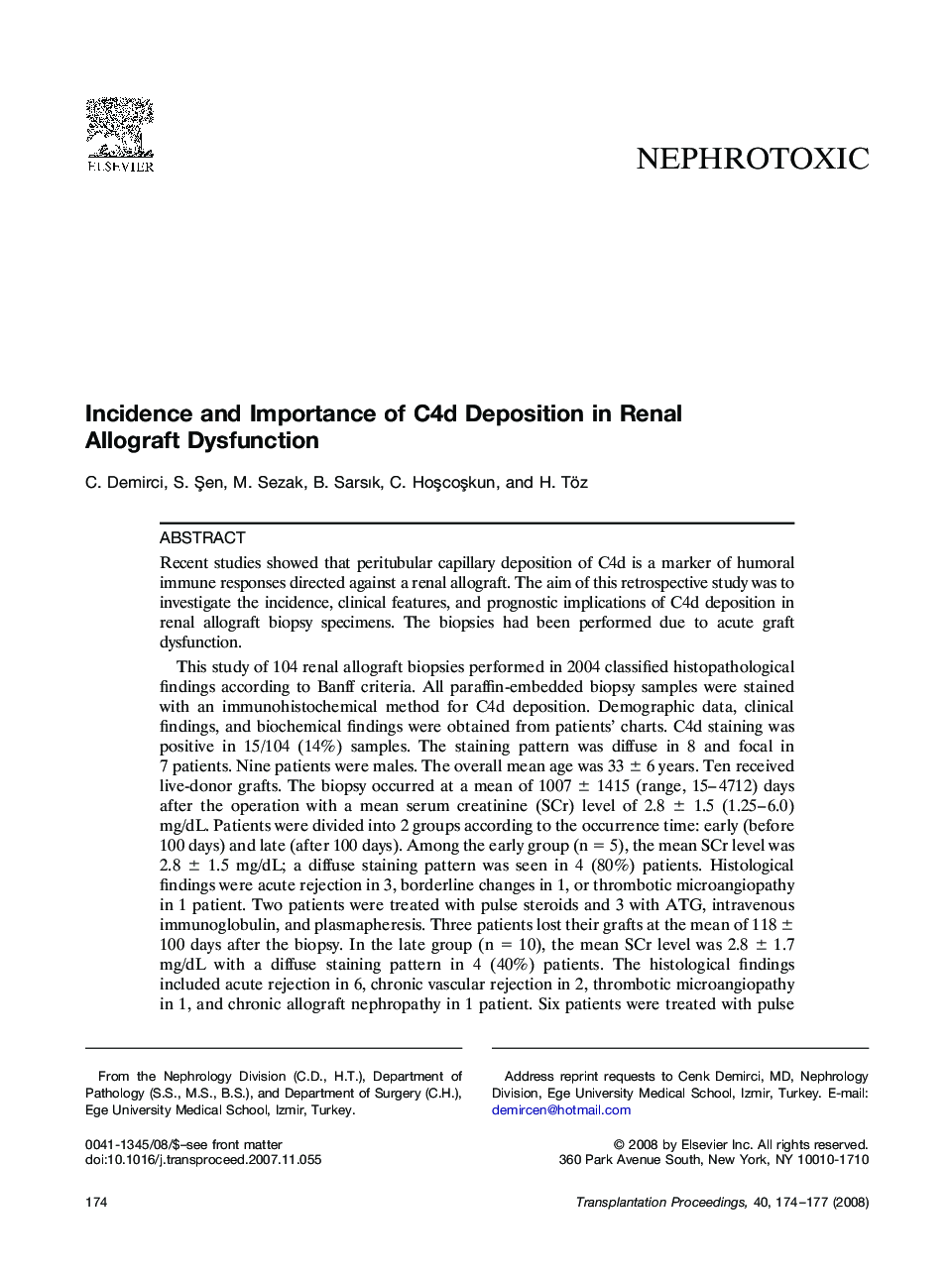| Article ID | Journal | Published Year | Pages | File Type |
|---|---|---|---|---|
| 4260457 | Transplantation Proceedings | 2008 | 4 Pages |
Recent studies showed that peritubular capillary deposition of C4d is a marker of humoral immune responses directed against a renal allograft. The aim of this retrospective study was to investigate the incidence, clinical features, and prognostic implications of C4d deposition in renal allograft biopsy specimens. The biopsies had been performed due to acute graft dysfunction.This study of 104 renal allograft biopsies performed in 2004 classified histopathological findings according to Banff criteria. All paraffin-embedded biopsy samples were stained with an immunohistochemical method for C4d deposition. Demographic data, clinical findings, and biochemical findings were obtained from patients’ charts. C4d staining was positive in 15/104 (14%) samples. The staining pattern was diffuse in 8 and focal in 7 patients. Nine patients were males. The overall mean age was 33 ± 6 years. Ten received live-donor grafts. The biopsy occurred at a mean of 1007 ± 1415 (range, 15–4712) days after the operation with a mean serum creatinine (SCr) level of 2.8 ± 1.5 (1.25–6.0) mg/dL. Patients were divided into 2 groups according to the occurrence time: early (before 100 days) and late (after 100 days). Among the early group (n = 5), the mean SCr level was 2.8 ± 1.5 mg/dL; a diffuse staining pattern was seen in 4 (80%) patients. Histological findings were acute rejection in 3, borderline changes in 1, or thrombotic microangiopathy in 1 patient. Two patients were treated with pulse steroids and 3 with ATG, intravenous immunoglobulin, and plasmapheresis. Three patients lost their grafts at the mean of 118 ± 100 days after the biopsy. In the late group (n = 10), the mean SCr level was 2.8 ± 1.7 mg/dL with a diffuse staining pattern in 4 (40%) patients. The histological findings included acute rejection in 6, chronic vascular rejection in 2, thrombotic microangiopathy in 1, and chronic allograft nephropathy in 1 patient. Six patients were treated with pulse steroids, and 3 with ATG and intravenous immunoglobulin. Five patients lost their grafts at a mean of 200 ± 270 days. The overall incidence of C4d deposition was 14%; it was seen both in the early and late posttransplantation period. Although a diffuse staining pattern was more frequently seen in the early period, C4d deposition indicated a poor allograft prognosis in both periods. Introduction of C4d staining into the routine may guide more specific treatments directed toward the humoral alloresponse.
